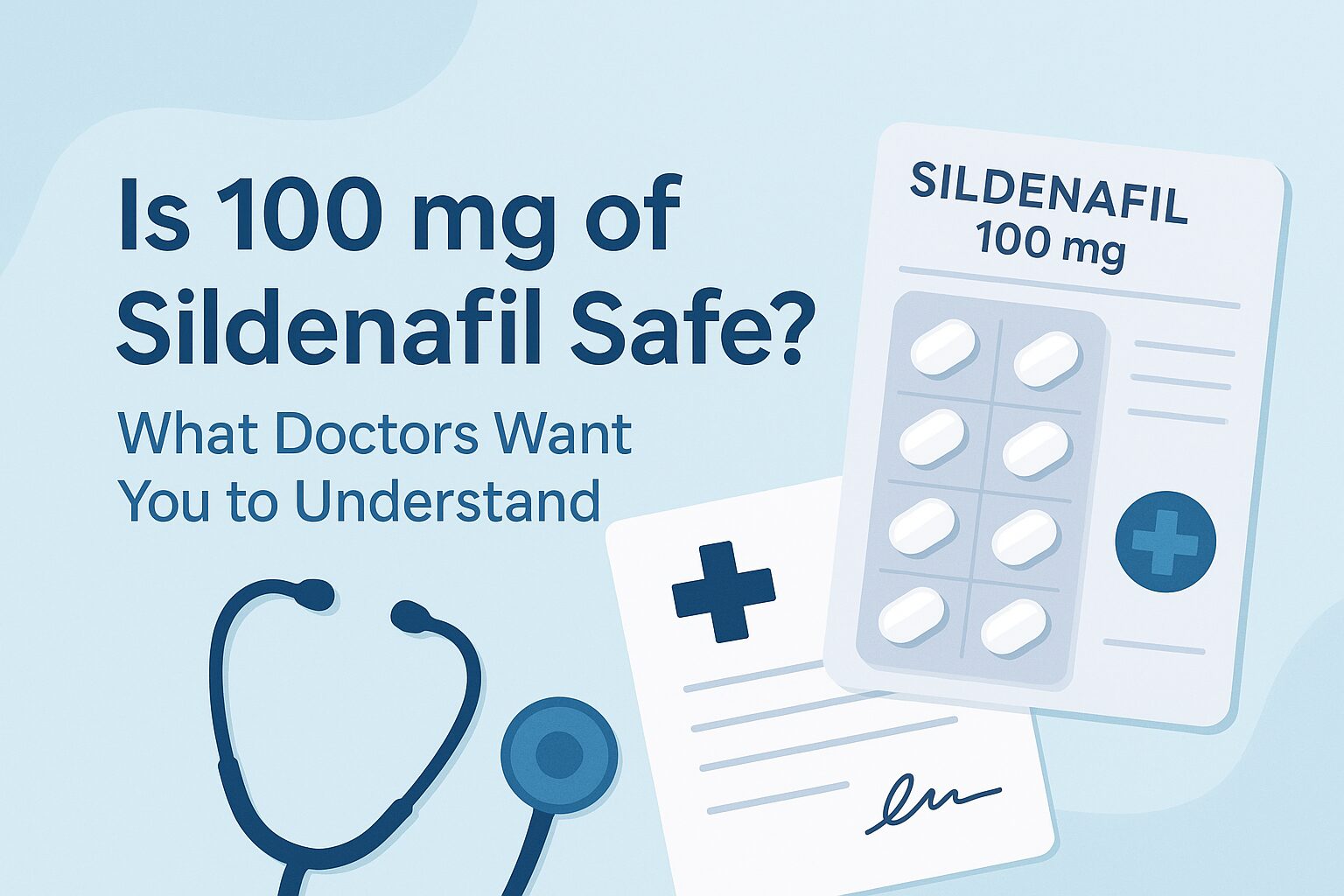Introduction
Sildenafil, best known as the active ingredient in Viagra, has been trusted for over two decades as one of the most effective treatments for erectile dysfunction (ED). But many men still ask the big question: “Is 100 mg of Sildenafil safe?”
The answer isn’t one-size-fits-all. While 100 mg is a commonly prescribed dose, it isn’t appropriate for everyone. In this guide, we’ll break down dosage ranges, safety insights from doctors, who should and shouldn’t take 100 mg, and what to do if side effects occur.
Understanding Sildenafil Dosage Ranges
Doctors usually tailor the dose based on individual health, response, and side effects.
-
Low Dose (25 mg): For men with certain health conditions (liver/kidney disease) or those using other medications.
-
Standard Dose (50 mg): Often the starting dose for most patients.
-
High Dose (100 mg): Maximum recommended daily dose, prescribed if lower doses don’t achieve sufficient effect.
💡 Key Point: Higher dose ≠ better results. Increasing to 100 mg may improve efficacy but also raises the risk of side effects.
Is 100 mg of Sildenafil Safe?
For healthy men under medical supervision, yes—100 mg can be safe and effective. Studies show that Sildenafil 100 mg is generally well tolerated, with side effects often being mild to moderate.
However, safety depends on:
-
Your overall health
-
Other medications you take
-
Presence of heart, liver, or kidney issues
-
How your body responds to lower doses
Who Should Avoid Sildenafil 100 mg?
Doctors warn that not everyone is a candidate for the maximum dose. You should avoid 100 mg of Sildenafil if you have:
-
Cardiovascular issues: Recent heart attack, stroke, unstable angina, or arrhythmia
-
Low blood pressure (hypotension) or uncontrolled high blood pressure
-
Severe kidney or liver impairment
-
Eye disorders: Such as retinitis pigmentosa or history of sudden vision loss
-
Concurrent medications: Especially nitrates (used for chest pain), riociguat, or certain antifungals and antibiotics
Common Side Effects at 100 mg
Sildenafil 100 mg side effects are typically mild, but they’re more likely at higher doses.
-
Headache
-
Facial flushing
-
Nasal congestion
-
Indigestion
-
Dizziness
-
Blurred vision or sensitivity to light
⚠️ Serious but rare risks include priapism (erection lasting more than 4 hours), sudden vision or hearing loss, and cardiovascular complications.
Doctor Insights: Safe Use of Sildenafil 100 mg
Doctors emphasize:
-
Start with the lowest effective dose (usually 50 mg).
-
Increase to 100 mg only if prescribed after monitoring your tolerance.
-
Never exceed one dose per 24 hours.
-
Always disclose your medical history and medication list to your healthcare provider.
💬 Dr. Smith, a urologist, notes:
“In practice, most men do well with 50 mg, but some require 100 mg for full effect. What’s important is that the decision to escalate should be made after reviewing cardiovascular risks and drug interactions.”
FAQs
❓ Can I start with 100 mg right away?
No. Doctors usually recommend starting with 50 mg. If it’s not effective, your physician may increase it to 100 mg. Starting at the maximum dose without supervision increases the risk of side effects.
❓ What happens if I overdose on Sildenafil?
Taking more than 100 mg (or multiple doses within 24 hours) can lead to severe headaches, low blood pressure, priapism, or even medical emergencies. If you suspect an overdose, seek immediate medical attention.
Final Thoughts
So, is 100 mg of Sildenafil safe? For many men, yes—but only with medical approval. It is the maximum daily dose, effective when lower doses aren’t enough, but it carries a higher chance of side effects and interactions.
Key takeaway: Always consult your doctor before using 100 mg, especially if you have underlying health conditions.
Related Posts
-
Can I Take 100 mg of Sildenafil If 50 mg Doesn’t Work?
-
Common Mistakes to Avoid When Taking Sildenafil 100 mg
-
Sildenafil 100 mg Interactions: Alcohol, Food, and Other Medications
-
When Not to Take Sildenafil 100 mg: Health Risks & Red Flags





